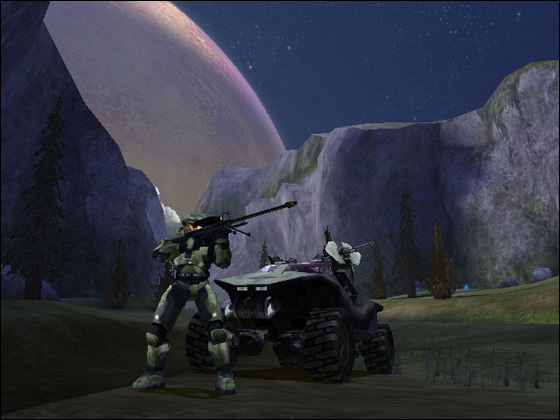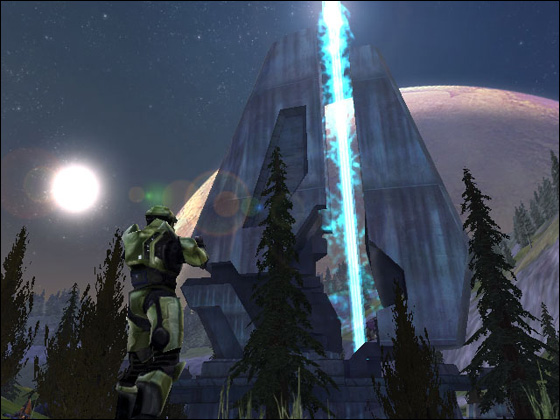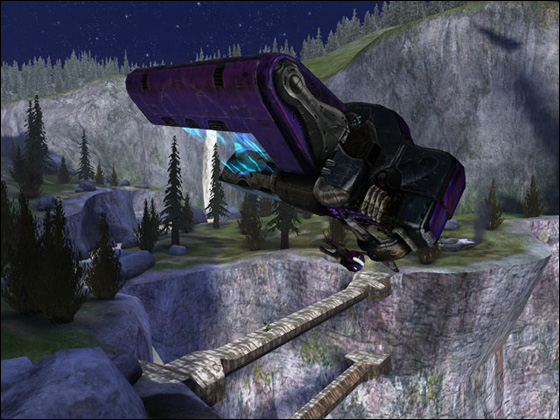Paper Mario (in as Many Pieces)
September 22nd, 2009

Here are a handful of thoughts about Paper Mario (N64) before I delve into the core analysis;
Phenomena
Paper Mario is the Super Mario Bros. phenomena realized. It’s a game developed on the childhood sentiments of the generation who fell in love with video games.
It’s self-knowingly this kind of game, and for these reasons I totally adore the Paper Mario series and its portable equivalent the Mario & Luigi series. Super Mario RPG for the SNES was the progenitor of this sub-series. Although Super Mario RPG lacked the charm of the Paper Mario games, it would go on to set the precedence and provide the structural model for internal studio Intelligent Systems to later pitch the idea of a new Mario Bros. RPG to NCL. In fact, Paper Mario was originally titled Super Mario RPG 2.
Flat and Isometric
One might deduce that Paper Mario was the amalgamation of two of the Super Nintendo’s premier games; Super Mario RPG and Yoshi’s Island. Ironically, as both games moved into the N64 generation, their visual aesthetics switched. The faux-3D Super Mario RPG evolved into the flat, cartoony Paper Mario and the flat, cartoony Yoshi’s Island saw the the faux-3D sequel Yoshi’s Story.
Thousand Year Door
Many media outlets laud Paper Mario: Thousand Year Door, yet the original Paper Mario always seems to get fewer mentions than its sequel. This is quite baffling really as I believe Paper Mario by far exceeds Thousand Year Door in all departments. Being a sequel, Thousand Year Door had to alternate itself from the original. With Nintendo’s key franchises adored for their tradition – and the base franchise games of each generation (Super Mario World, Zelda:OOT etc.) always dishing out a new iteration of tradition – it’s always difficult for the sequels to carve their own identity. This growing pain presented itself as an underlying detriment in Thousand Year Door. That’s not to say TYD was a bad game or even significantly inferior to Paper Mario, rather Paper Mario got so much right on its first attempt that a sequel would always live in its shadow. So why doesn’t it then? Why does Paper Mario champion over its sequel?
Simple answer. Paper Mario arrived too late and at the worst possible time to gain serious exposure. Furthermore it saw only limited shipments at a premium price. All of this while the N64 was disappearing off the face of the earth, the PSone was living it up and just as the Playstation 2 began hitting it’s stride. Paper Mario was essentially dead on arrival, relegating itself to a niche favourite.
Modesty
Paper Mario is a perfect game. That is, it achieves everything it sets out to do. Unlike most game developers who continue to shoot themselves in the foot by setting high, unattainable expectations, the Paper Mario series is modest. By adopting this approach, Paper Mario feels like a fruitful endeavour. There aren’t gaping holes in the gameplay or chunks of filler, all 23 hours I’ve spent with it have been worthwhile and engaging. This is particularly notable for the RPG genre of the day where 60hrs of gameplay where prerequisites. Less fat, more enjoyment, better game, simple.
Foreground/Background
Paper Mario is similar to cartoons beyond appearances alone. You know how you can easily differentiate animated objects from their inanimate backgrounds in cartoons? Simply by the contrast between the cel drawing and the background? Well, Paper Mario features the same dynamic with interactional objects presented as 2D, paper renders in comparison to their 3D-rendered backgrounds. This doesn’t apply for all objects though, such as trees and so forth, but it still presents a surprisingly clear distinction.
Chapter Close Music
Of course, the whole game is nostalgic, but nothing touched me more than the ending of a chapter. On completing a given chapter, the screen zooms out revealing a stage, a remix of the castle complete music from Super Mario World plays accompanied by a similarly inspired narration at the bottom of the screen. Awww…
Twink
Talking about awwww….Twink is probably the cutest Nintendo character ever. I love him so much.
Additional Readings
Prince of Persia Mega Compendium
September 20th, 2009

(My Prince of Persia: The Two Thrones review is now up at VGB so please take a read. Much like the others it’s an exhaustive write-up. Also, this review evidences my previous article Prince of Persia Trilogy: Purity, Transgressions and Dichotomy so please feel free to take a read of that as I’ve edited in all the required links.)
Popular bloggers, the ones with many hits and high posting frequencies, often tend to compile monthly or even weekly anthologies of their posts as a sort of round up, ‘best of’ collection, saving these compilations for the quiet days of the week.
I don’t do this much, because frankly it’s all pretty lazy. If you want to hear me discuss Half-life, find the Half-life tag and follow the trail. I should probably makes tags a little easier to find though. Hmm…I’ll get onto that – anyways, I’ve written something like 12,000 words on the Prince of Persia series over the past few months, not just here but externally too. So fittingly I should pretend to be a smug, successful blog and cobble my articles together into an anthology. Here goes;
Key Commentary
In these posts I discuss the three PS2 games and PoP Classic wholly. I focus on the narrative and platforming systems as well as the varying thematic attires of each game.
Prince of Persia: The Sands of Time review (PS2)
Prince of Persia: Warrior Within review (PS2)
Prince of Persia: The Two Thrones Review (PS2)
Prince of Persia Classic Criticism
Additional Commentaries
These articles are written with a broader angle focusing instead on my overarching thoughts on the series and trilogy, plus the usual cultural snark.
Prince of Persia Trilogy: Purity, Transgressions and Dichotomy
Balancing Western and Middle Eastern Cultures in Prince of Persia: The Sands of Time
XIII Vs Prince of Persia (Next Gen) – Cel-Shaded Comparison
Additional Readings
Porting Two Thrones to PSP and Wii – Ben Mattes Blog
Visual Connection: The Best Part about Halo (Vistas)
September 17th, 2009
I want to conclude my discussion on the Halo series by not saying very much…herm..yes. It’s fair to say that I thoroughly enjoyed playing through both Halo and Halo 2, which is why I want to celebrate by discussing my favourite part of the series — the vistas. And no, I don’t mean Windows Vista, but rather the gorgeous landscapes of Halo‘s self-titled ‘Halo’ level.
I love the visual aura I get from this area. The landmass is simply overwhelming. Your place in the pit of this valley heightens the sense of surrounding scale. The deep blue and purple sky colours the white cliff faces with it’s reflection. The land full of detailed texture, long in range. Everything augmented by the giant Halo ring splitting the sky. It’s very iconic.
In my time of playing this level I took time out of the strict alien-zapping regime to just survey the surroundings. It’s the first time I’ve ever felt like a tourist in a video game. In which case here are some happy snaps;







Video



 Game Design Companion: A Critical Analysis of Wario Land 4 - $7.99
Game Design Companion: A Critical Analysis of Wario Land 4 - $7.99 Level Design: Processes and Experiences
Level Design: Processes and Experiences Speed Boost: The Hidden Secrets Behind Arcade Racing Design - $5.99
Speed Boost: The Hidden Secrets Behind Arcade Racing Design - $5.99 Adventures in Games Analysis: Volume I - $5.99
Adventures in Games Analysis: Volume I - $5.99







